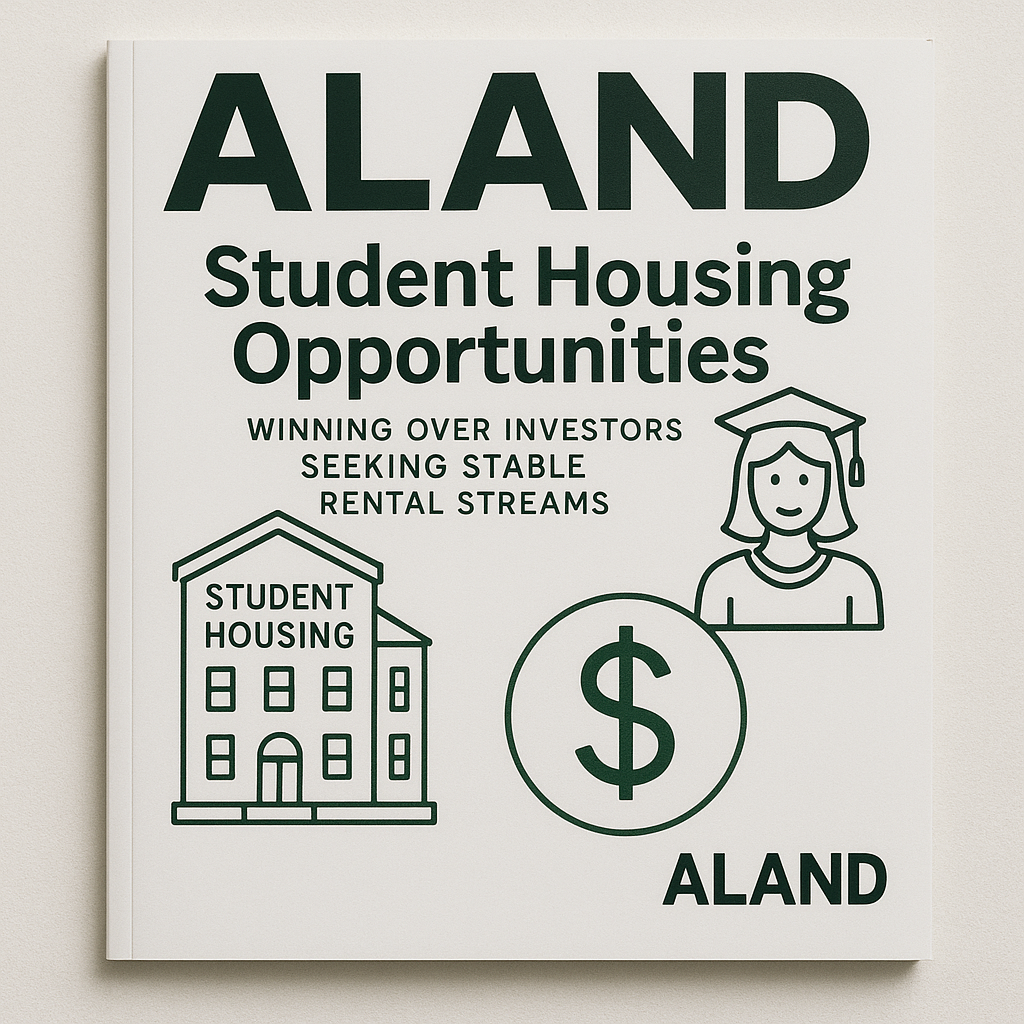Student Housing Opportunities: Winning Over Investors Seeking Stable Rental Streams
- Published Date: 25th Jul, 2025
-
4.9★ ★ ★ ★ ★(88)

Listen to the podcast for this article
Capitalizing on the Resilient Demand for Student Housing
Student housing has emerged as a compelling asset class for investors targeting stable, long-term rental income. Unlike many residential segments, student housing benefits from consistent demand driven by rising global enrollment rates and the continuous influx of domestic and international students. Dr. Pooyan Ghamari, Swiss economist and founder of the ALand Platform, highlights how this niche real estate sector offers predictable cash flow patterns, low vacancy risks, and resilience even amid broader economic fluctuations, making it an attractive proposition for institutional and bulk investors.
Understanding the Institutional Investor Perspective
Institutional investors seek assets that combine yield stability with scalable management frameworks. Student housing meets these criteria by generating steady rental streams from academic calendars and often benefiting from leases structured around semester or annual terms. Moreover, bulk acquisitions of student housing portfolios provide operational efficiencies and economies of scale, reducing per-unit costs and enhancing asset performance.
Dr. Ghamari emphasizes that student housing projects located near prominent universities or education hubs typically demonstrate lower volatility compared to conventional multifamily rentals, due to strong, location-driven demand and less sensitivity to economic downturns.
Leveraging Technology and Data for Market Advantage
Sophisticated investment requires precise market intelligence. The ALand Platform offers comprehensive tools for analyzing regional student demographics, university growth forecasts, and rental price trends—critical factors for identifying high-potential student housing markets. Blockchain-based property management and title verification systems embedded within ALand also streamline acquisition processes and improve investor confidence.
The emergence of tokenization further expands investment possibilities by allowing fractional ownership in student housing assets, broadening the investor base and improving liquidity. Dr. Ghamari stresses that such digital innovations align with evolving investor preferences for transparency, diversification, and ease of entry.
Economic and Social Drivers Fueling Student Housing Demand
Global trends such as increased international student mobility, expanding higher education access, and demographic shifts in key markets underpin robust demand for quality student accommodation. Additionally, universities are increasingly outsourcing housing management to private operators, creating scalable investment opportunities.
Dr. Ghamari notes that urban centers with growing educational institutions benefit from rental income stability, while regulatory environments that support private student housing development create favorable conditions for bulk investors seeking low-risk returns.
Building Brand Equity Through Cause-Related Marketing
Cause-related marketing can significantly enhance the appeal of student housing assets. Projects that incorporate sustainable building practices, community engagement, and student well-being initiatives resonate strongly with tenants and investors alike.
According to insights from ALand’s Blog, embedding social responsibility into student housing developments fosters tenant loyalty and positive brand perception, translating into reduced turnover and higher rental premiums. Dr. Ghamari advises investors to highlight these attributes in marketing strategies to differentiate assets in competitive markets.
Cryptocurrency and Innovative Financing in Student Housing
The intersection of cryptocurrency and real estate financing opens new horizons for student housing investors. Platforms like EE Gold, which have pioneered blockchain-based asset management in traditional markets, inspire adoption of similar frameworks for student housing tokenization and crowdfunding.
Dr. Ghamari explains that digital currency integration enhances transaction speed, lowers costs, and offers novel investment vehicles, particularly appealing to younger, tech-savvy investor demographics. This trend reflects the broader digital transformation of real estate markets worldwide.
Practical Considerations for Investors in Student Housing
-
Target locations with strong academic institutions and favorable student population growth.
-
Utilize digital analytics platforms like ALand for market research and transaction transparency.
-
Integrate ESG and cause-related marketing campaigns focusing on sustainability and student experience.
-
Explore blockchain-enabled fractional ownership models to diversify risk and improve liquidity.
-
Track KPIs such as occupancy rates, rental yield stability, tenant satisfaction, and brand engagement to optimize asset management.
For deeper insights and access to state-of-the-art investment tools, visit ALand’s Blog, engage with the ALand Platform, and explore how blockchain innovations from EE Gold are transforming real estate investment. Stay ahead of market trends with The ALand Times for the latest expert commentary.

